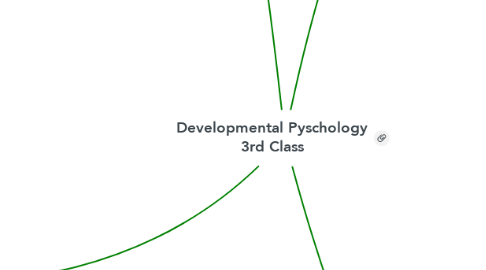
1. Cognitive
1.1. Vygotsky
1.1.1. Cognitive development is dependent on social interaction
1.1.1.1. Cultural tools are important
1.1.1.1.1. Language
1.1.2. Implementation
1.1.2.1. After each lesson place children in groups as collaboration is vital
1.1.2.1.1. After an Irish lesson allow each table to use 5 verbs to create a story on the studied topic
1.1.2.2. Teacher must be approachable and calm at all times
1.2. Piaget
1.2.1. Concrete operational
1.2.1.1. Child faces concrete problems
1.2.1.2. Little or no room for hypothetical thinking
1.2.1.3. Implementation
1.2.1.3.1. Use concrete materials and visual aids
2. Social
2.1. Vygotsky
2.1.1. Child as an apprentice
2.1.1.1. Peer tutoring
2.1.1.1.1. Some students may struggle with certain topics and could be placed with stronger students
2.1.1.2. Zone of proximal devlopment
2.1.1.2.1. Collaborative learning
2.1.1.2.2. Allow the child to take more initiative
2.2. Piaget
2.2.1. Child as a scientist
2.2.1.1. Assimilation
2.2.1.1.1. Provide knowledge and allow the child to develop their own method of thinking
2.2.1.1.2. At this level computer skills should eb developing
2.2.1.1.3. Implementation
2.3. Bandura
2.3.1. Children mirror behaviours they witness
2.3.1.1. Promote and model positive behaviour
2.3.1.2. Deal with disruptive students effectively or other student may copy
2.3.1.2.1. Retrain from aggressive response
2.3.1.3. Set goals to give children something to work towards
2.3.1.3.1. Learn selected division tables in a week
2.4. Eriskon
2.4.1. Formal skills developing
2.4.2. Peer groups emerging
2.4.3. Peer grouping may result in isolation for others
2.5. Implementation
2.5.1. Restrain from ridicule
2.5.1.1. Praise all children to develop self-confidence
3. EMOTIONAL
3.1. Classical conditioning
3.1.1. Pavlov & Watson
3.1.1.1. Involuntary learning occurs due to stimulus responses
3.1.1.2. Attitudes against certain curriculum subjects are reflected in the children's work
3.1.1.3. Common responses to such stimuli include anxiety and fear of rejection from peers
3.1.2. Implemenation
3.1.2.1. Make lessons exciting using visuals and props creating a positive attitude
3.1.2.2. Use group work to promote social relationships
3.1.2.3. Consistently use positive language when addressing children
3.1.2.4. Create a safe environment where questioning is encouraged
3.2. Erikson
3.2.1. Industry V Inferiority
3.2.1.1. Child faces a milestone
3.2.1.1.1. Overcoming this crisis will shape a child's self identity
3.2.1.1.2. Comparisons between children at this age will create embarrassment and negative opinions of class
3.2.1.2. Implementation
3.2.1.2.1. Abstain from ridicule
3.2.1.2.2. Appreciate the uniqueness of each child
3.2.1.2.3. Encourage curiosity and question
3.2.1.2.4. Recognize the development of peer groups and ensure nobody is left out
4. Physical
4.1. Importance of Play
4.1.1. Erikson
4.1.2. Vygotsky
4.2. Encourage physical activity within the classroom and school
4.2.1. Continue to develop the gross motor skills of running,jumping, kicking,catching
4.2.1.1. According to the primary school curriculum, By 9 years old these skills should be executed with better co-ordination
4.3. Implementation
4.3.1. Utilise sports such as gymnastics, basketball and football
4.3.2. Promote extracirricular activities
4.3.3. Offer rewards
4.4. Create teams of students making excercise fun and exciting
4.5. For those who had the healthiest lunch
4.5.1. For those who walk the most steps in a week
4.6. Obesity
4.6.1. Lack of excercise
4.6.2. Bad diet
4.6.3. According to the GUI study a high proportion of nine year olds are overweight: 30% girls and 22% boys
